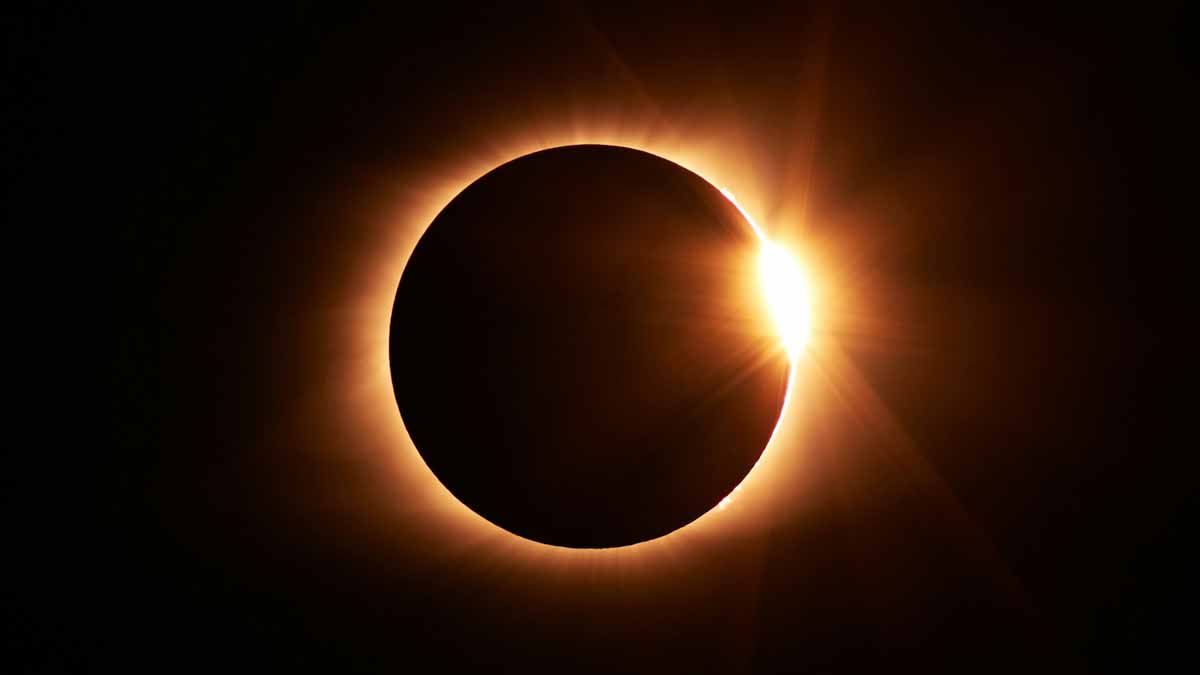A hush will sweep daylight as the Moon lines up with the Sun, and the sky answers with noon-darkness. Expect a rare window of wonder that rewards those who plan well, travel smart, and look safely. The event sits at the crossroads of science and emotion, and it invites both. In this moment, a solar eclipse turns time slow, shadows sharp, and memories permanent.
Where and when to watch the solar eclipse safely
The alignment peaks on August 2, 2027, and the path of totality cuts a graceful track across three regions. Southern Europe meets the spectacle first, then North Africa, then parts of the Middle East. North America misses totality, although Newfoundland will catch a brief partial bite. Many call it the Great North African Eclipse, and with reason. This solar eclipse is long, wide, and intensely photogenic.
The path starts over the North Atlantic, then kisses land along Spain’s Costa de la Luz in Andalusia. Gibraltar follows, a small rock with a giant view, before the shadow slides south. The line then sweeps Morocco, Algeria, Tunisia, Libya, and Egypt, where darkness lingers longest. After that it runs through Saudi Arabia and Yemen, skims parts of East Africa, and ends near the remote Chagos Archipelago.
Durations impress. Egypt hosts the peak, with up to 6 minutes 22 seconds of totality near Luxor and Berenike. That is the longest stretch on land between 2009 and 2114. Around 89 million people live under or near the track and can organize travel with ease. Safety matters every second: use ISO 12312-2 glasses, or a certified viewer, and follow local guidance.
Why this solar eclipse lasts so long on land
The Moon does not circle in a perfect ring. Its orbit is an ellipse, so distance changes over time. When it comes closer to Earth, the Moon appears slightly larger. Because of that, its dark core shadow, the umbra, grows a little wider. A wider umbra means more spots enjoy full cover. As a result, totality stretches farther and holds longer.
Proximity is only part of the story, as geometry adds more. The track sits near the equator, where Earth’s surface speed works with the shadow’s motion. That adds minutes because ground rotation keeps pace for longer. Put together, closeness and latitude slow the dance. Because of these factors, the solar eclipse reaches its on-land maximum in Egypt, where still air and big horizons help.
Planning thrives on clear timing. Use a reliable map with local clocks, altitude, and Sun height to pick your spot. A good guide lists first contact, totality start, and totality end for each town. You get travel confidence, because you can compare weather history, terrain, and routes. Safeguard your eyes at all non-total phases, since damage happens fast and without pain.
Routes, durations, and smart picks across two continents
Luxor stands out. The city pairs long totality with world-class heritage, so every hour outside the shadow feels rich. Expect about 6 minutes 20 seconds of darkness near prime viewing zones. Ancient stones at Karnak and Luxor Temple add drama without adding light. Your solar eclipse plan there should include shade, water, and flexible transport, since crowds grow early.
If you prefer milder heat, Tunisia offers a cooler edge with big minutes. Sfax sits near the path center line and enjoys about 5 minutes 41 seconds of totality. Coastal air helps with comfort, and desert dust eases compared with deeper Sahara. Hotels and roads are solid, prices stay reasonable, and sunrise angles work well for wide photos. Check harbor areas for open views.
Southern Spain brings Europe into the show with style. Tarifa and Cádiz post up to 4 minutes 39 seconds, and the coast offers clean horizons. Gibraltar delivers a first-land moment that photographers love, although time in darkness is shorter. Elsewhere in Europe, partial phases stretch across many capitals. North America sees no totality, yet Newfoundland gains a small partial view near sunset.
What six minutes of midday darkness can change in you
Long minutes in full shadow change how you remember light. Plan a spot early, confirm timing, and protect your eyes at every bright phase. Then let the hush arrive, and hold the moment. As the corona spills around the black disk, the solar eclipse will fold science into awe and turn a short span into a lifetime marker.
